
Battle of the Bulge is a board wargame published by Avalon Hill (AH) in 1965 that simulates the World War II battle of the same name. General Anthony McAuliffe (ret.), who had been commanding officer at Bastogne during the Battle of the Bulge, was a consultant during the game's development. The game proved popular and sold more than 120,000 copies, but was dogged by criticisms of historical inaccuracies, and was finally replaced by a completely new edition in 1981. A third edition in 1991 was released as part of the Smithsonian American History Series.
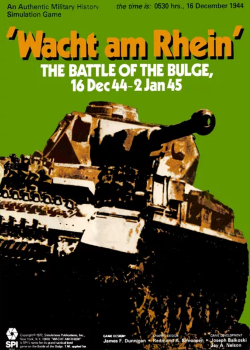
Wacht am Rhein is a grand tactical monster board wargame published by Simulations Publications, Inc. (SPI) in 1977 that simulates Germany's Battle of the Bulge offensive in late 1944 during World War II.
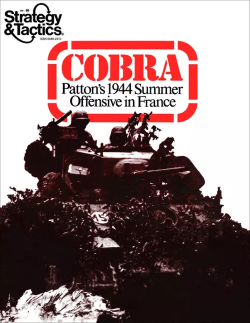
Cobra: Game of the Normandy Breakout, originally titled Cobra: Patton's 1944 Summer offensive in France, is a board wargame published by Simulations Publications Inc. (SPI) in 1977 that simulates the 1944 breakout of Allied forces from Normandy following D-Day.
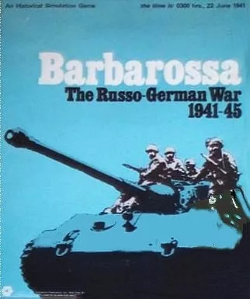
Barbarossa: The Russo-German War 1941–45 is a board wargame published by Simulations Publications Inc. (SPI) in 1969 that simulates the conflict between Germany and the Soviet Union on the Eastern Front of World War II. This was only SPI's second game produced during a preliminary round of "Test Series" games, and proved to be the most popular. Despite the title, taken from the German operational name for their initial invasion of the Soviet Union, the game covers the entire Eastern Front campaign from the German invasion in 1941 to the Fall of Berlin in 1945.

The Marne: Home Before the Leaves Fall is a board wargame published by Simulations Publications Inc. (SPI) in 1972 that is a strategic simulation of the First Battle of the Marne during World War I. The subtitle is attributed to Wilhelm II, who supposedly told German soldiers in August 1914 "You will be home before the leaves fall from the trees."
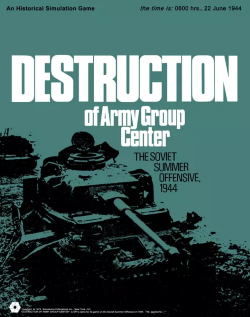
Destruction of Army Group Center, subtitled "The Soviet Summer Offensive, 1944" and often shortened to DAGC, is a board wargame published by Simulations Publications Inc. (SPI) in 1973 that simulates Operation Bagration, the June 1944 Soviet offensive during World War II that shattered the German line and marked the start of Germany's long retreat back to Berlin and the end of the war.

El Alamein: Battles in North Africa, 1942 is a board wargame published by Simulations Publications Inc. (SPI) in 1973 that simulates the final four months of the North African campaign during World War II.

The Game of France, 1940: German Blitzkrieg in the West, originally titled "The Battle for France, 1940", is a board wargame originally published by Simulations Publications Inc. (SPI) in 1971 that was subsequently re-issued by Avalon Hill in 1972. Both editions simulate the World War II Battle of France in 1940, when the German blitzkrieg offensive overwhelmed French and British defenses in northern France.

Kursk: Operation Zitadelle is a board wargame published by Simulations Publications Inc. (SPI) in 1971. It was the first wargame to simulate the Battle of Kursk, the large tank battle during World War II.

The Moscow Campaign, subtitled "Strike and Counterstrike Russia", is a board wargame published by Simulations Publications Inc. (SPI) in 1972 that simulates combat near Moscow during World War II.
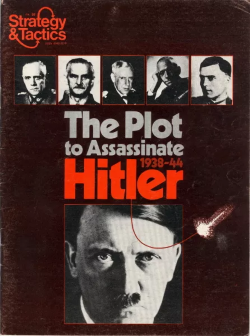
The Plot to Assassinate Hitler is a board game published by Simulations Publications (SPI) in 1976 that simulates the power struggles in Germany's High Command in the latter years of World War II. The game was the second game in SPI's "Power Politics" series, but did not sell as well as the other games in the series – critic Brian Train referred to it as "the ugly duckling."

Desert War: Tactical Warfare in North Africa is a board wargame published in 1973 by Simulations Publications, Inc. (SPI) that simulates combat in North Africa during World War II..

Normandy: The Invasion of Europe 1944 is a board wargame published by Simulations Publications Inc. (SPI) in 1969 that simulates the D-Day landings on the beaches of Normandy, and the six days that followed as the German forces tried to prevent an Allied break-out. A second revised edition was published in 1971
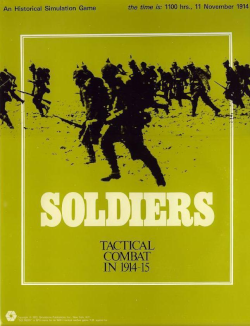
Soldiers: Tactical Combat in 1914–15 is a board wargame published by Simulations Publications Inc. (SPI) in 1972 that simulates the early months of World War I when combatants experienced a degree of mobility before the onset of trench warfare. The game enjoyed positive reviews, and was credited as the influential predecessor of popular tactical games such as Sniper!, StarSoldier, and the bestselling Squad Leader.

Turning Point: The Battle of Stalingrad is a board wargame published by Simulations Publications Inc. (SPI) in 1972 that simulates the Battle of Stalingrad during World War II, and the factors that led to the encirclement and destruction of Germany's Sixth Army.

Red Star/White Star: Tactical Combat in Europe in the 1970s is a board wargame published by Simulations Publications Inc. (SPI) at the height of the Cold War in 1972 that simulates hypothetical battles in West Germany between Warsaw Pact invaders and NATO defenders.

The Franco-Prussian War, subtitled "August 1 to September 2, 1870", is a board wargame published by Simulations Publications Inc. (SPI) in 1972 that simulates the 1870 war between the Second French Empire and the North German Confederation led by the Kingdom of Prussia.

Rifle & Saber: Tactical Combat 1850–1900 is a board wargame published by Simulations Publiucations Inc. (SPI) in 1973 that simulates at a tactical level various battles and skirmishes from the mid-19th century to the dawn of the 20th century. Although popular for a time due to its simple rules and many scenarios, it did not receive critical acclaim, and quickly fell out of favor as better wargames appeared on the market.

The Ardennes Offensive , subtitled "The Battle of the Bulge, December 1944", is a board wargame published by Simulations Publications, Inc. ( in 1973 that simulates the Battle of the Bulge during World War II.

The Major Battles and Campaigns of General George S. Patton is a board wargame published by Research Games Inc. (RGI) in 1973 that simulates three battles of World War II in which General George S. Patton played a significant role.




















